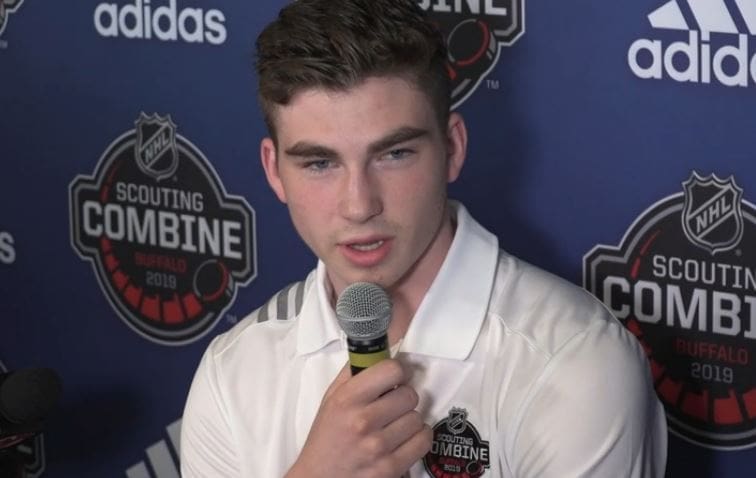Montreal Canadiens
Possible Reason Canadiens Were Delaying Dach Extension

The Montreal Canadiens were looking to make the Kirby Dach to extension official, but a technicality in the NHL’s CBA could forced them to make a move first.
News had surfaced that the Montreal Canadiens and Kirby Dach are extremely close to announcing a four-year extension worth around $3.5M annually (AAV). However, there seemed to be a hold-up because the Canadiens wanted to make some moves before making the contract official. The reason being is that, if the Canadiens were to officially announce Kirby Dach’s contract, they would have been over the salary cap.
During the off-season, NHL clubs are able to go over the salary cap by up to 10%, meaning that teams currently have the ability to spend $8.25M over the $82.5M salary cap, for a total of $90.75M until the start of the 2022-2023 season. The off-season salary cap of $90.75M can be extended even further with the use of LTIR, meaning that any player placed on off-season LTIR would see their cap hit added to the off-season upper limit of $90.75M if the club was at or over the limit. However, the issue seems to be the nature of the LTIR situation as it pertained to Carey Price.
As of this morning, the Canadiens had $87.65M in player salary on the books, meaning they only have about $3.3M in off-season cap space (remember, off-season cap space is currently at $90.75M). When general manager Kent Hughes spoke after the acquisition of Sean Monahan, the deal that put Montreal so close to the off-season upper limit, he mentioned that it didn’t look good for Price to start the season, but at no point did he say this was confirmed.
“At this point in time, the news on Carey’s knee is pretty discouraging in the sense that there hasn’t been any improvement through the rehab process all last season, obviously continued to create problems for him,” said Hughes regarding Price’s health. “This summer he went through the process, obviously a shot to the knee seeing if that would help. It did not, and, at this point, we don’t expect Carey to be available for the start of the season, quite frankly, I don’t know that there’s a path for Carey to return this season through the rehab process.”
The lack of confirmation on the subject may have been the issue here, as Hughes mentions an expectation rather than a definitive stance on Price’s health, meaning they might not yet have had full medical confirmation. According to Article 50.10 (d) of the NHL‘s CBA, an NHL club’s physicians need to prove that the player is unfit to play this upcoming season in a definitive fashion before a club can put said player on LTIR. See the full definition below:
In the event that a Player on a Club becomes unfit to play (i.e., is injured, ill or disabled and unable to perform his duties as a hockey Player) such that the Club’s physician believes, in his or her opinion, that the Player, owing to either an injury or an illness, will be unfit to play for at least (i) twenty-four (24) calendar days and (ii) ten (10) NHL Regular Season games, and such Club desires to replace such Player, the Club may add an additional Player or Players to its Active Roster, and the replacement Player Salary and Bonuses of such additional Player(s) may increase the Club’s Averaged Club Salary to an amount up to and exceeding the Upper Limit, solely as, and to the extent and for the duration, set forth below.
That likely means that the Montreal Canadiens cannot put Price on LTIR until his medical file is officially examined by the club’s physician. As we found out on Wednesday, The Canadiens did officially get confirmation that Price could be put on LTIR and were able to do so to accomodate Kirby Dach’s new four-year, $13.5M contract on the books.
**NB: Juraj Slafkovsky’s contract was not considered during this equation, as his contract doesn’t yet figure into the calculation until he officially makes the team.









